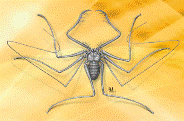Papers in the Biological Sciences

Eileen Hebets Publications
Document Type
Article
Date of this Version
8-2016
Citation
Published in Animal Behaviour 119 (2016), pp 213–222. doi 10.1016/j.anbehav.2016.07.008
Abstract
Most studies exploring the evolution of female mating systems focus on species in which females are either monandric (mate with a single male) or highly polyandric (mate with multiple males), but less is understood about variation in mating decisions within a species. How and why do females of a single species decide whether or not to copulate with additional mates? In this study we attempt to answer this question in the highly dimorphic crab spider, Mecaphesa celer, whose females may be either monandric or polyandric. We tested three hypotheses: (1) a female’s decision to remate is based on sequential mate choice; (2) a female’s decision to remate has fitness consequences, with polyandry providing increased benefits; and (3) mating order predicts male paternity, following a pattern of first-male sperm precedence. We conducted double-mating trials between females and males of varied sizes and age, quantified six putative fitness benefits obtained by monandric and polyandric females, and tested sperm precedence patterns using the sterile male technique. We found no evidence that female M. celer are performing sequential mate choice. Moreover, we found no difference in fitness between monandric and polyandric females. Finally, we found that paternity in polyandric females follows a pattern of sperm mixing. Mecaphesa celer females’ decisions regarding mating with multiple males do not appear to be influenced by comparisons of male attributes or by future fitness benefits. We recommend future studies examining male ejaculate components that might influence female mating decisions.
Included in
Animal Sciences Commons, Behavior and Ethology Commons, Biology Commons, Entomology Commons, Genetics and Genomics Commons


Comments
Copyright © 2016 The Association for the Study of Animal Behaviour. Published by Elsevier Ltd. Used by permission.